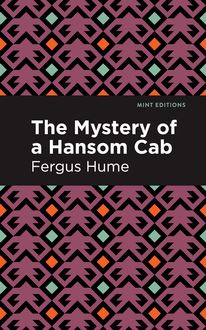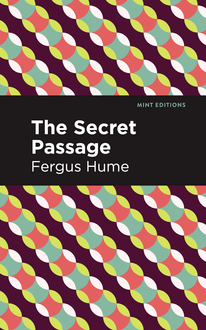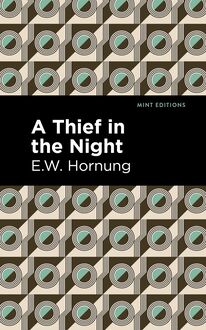-
 Univers
Univers
-
 Ebooks
Ebooks
-
 Livres audio
Livres audio
-
 Presse
Presse
-
 Podcasts
Podcasts
-
 BD
BD
-
 Documents
Documents
-
- Cours
- Révisions
- Ressources pédagogiques
- Sciences de l’éducation
- Manuels scolaires
- Langues
- Travaux de classe
- Annales de BEP
- Etudes supérieures
- Maternelle et primaire
- Fiches de lecture
- Orientation scolaire
- Méthodologie
- Corrigés de devoir
- Annales d’examens et concours
- Annales du bac
- Annales du brevet
- Rapports de stage
La lecture à portée de main
Vous pourrez modifier la taille du texte de cet ouvrage
Découvre YouScribe en t'inscrivant gratuitement
Je m'inscrisDécouvre YouScribe en t'inscrivant gratuitement
Je m'inscrisEn savoir plus
Vous pourrez modifier la taille du texte de cet ouvrage
En savoir plus

Description
Mademoiselle of Monte Carlo (1921) is a thriller by Anglo-French writer William Le Queux. Published at the height of Le Queux’s career as a leading author of popular thrillers, Mademoiselle of Monte Carlo is a story of mystery, murder, and international crime. Using his own research and experience as a journalist and adventurer, Le Queux crafts an accessible, entertaining tale for readers in search of a literary escape. Known for his works of fiction and nonfiction on the possibility of Germany invading Britain—a paranoia common in the early twentieth century—William Le Queux also wrote dozens of thrillers and adventure novels for a dedicated public audience. Although critical acclaim eluded him, popular success made him one of England’s bestselling writers. In Mademoiselle of Monte Carlo, Hugh Henfrey travels to Monte Carlo following the mysterious death of his father. In search of answers, he tracks down Mademoiselle Yvonne Ferad, a legendary gambler who frequents the tables of Europe’s casino capital. Having received a tip that Ferad knows something about his father, Henfrey finds and interrogates her. But at the moment the truth is to be revealed, an assassin appears and guns Ferad down, mortally wounding her. Henfrey is made the primary suspect, forcing him to flee the police by joining a network of criminals under the wing of the Sparrow, a gentleman ringleader and veritable mastermind who conspires to transport the young Englishman out of Monaco. As he moves through the shadows from Italy to Belgium and England, Henfrey begins to suspect that the secret of his father’s death has been right before his eyes the whole time. With a beautifully designed cover and professionally typeset manuscript, this edition of William Le Queux’s Mademoiselle of Monte Carlo is a classic thriller reimagined for modern readers.
Sujets
Informations
| Publié par | Mint Editions |
| Date de parution | 21 mai 2021 |
| Nombre de lectures | 0 |
| EAN13 | 9781513285948 |
| Langue | English |
| Poids de l'ouvrage | 1 Mo |
Informations légales : prix de location à la page 0,0500€. Cette information est donnée uniquement à titre indicatif conformément à la législation en vigueur.
Extrait
Mademoiselle of Monte Carlo
William Le Queux
Mademoiselle of Monte Carlo was first published in 1921.
This edition published by Mint Editions 2021.
ISBN 9781513280929 | E-ISBN 9781513285948
Published by Mint Editions®
minteditionbooks.com
Publishing Director: Jennifer Newens
Design & Production: Rachel Lopez Metzger
Project Manager: Micaela Clark
Typesetting: Westchester Publishing Services
C ONTENTS I. T HE S UICIDE’S C HAIR II. C ONCERNS A G UILTY S ECRET III. I N THE N IGHT IV. W HAT THE D OSSIER C ONTAINED V. O N THE H OG’S B ACK VI. F ACING THE U NKNOWN VII. F ROM D ARK TO D AWN VIII. T HE W HITE C AVALIER IX. C ONCERNS THE S PARROW X. A L ESSON IN A RGOT XI. M ORE A BOUT THE S PARROW XII. T HE S TRANGER IN B OND S TREET XIII. P OISONED L IPS XIV. R ED D AWN XV. T HE N AMELESS M AN XVI. T HE E SCROCS OF L ONDON XVII. O N THE S URREY H ILLS XVIII. T HE M AN WITH THE B LACK G LOVE XIX. T HE S PARROW XX. T HE M AN W HO K NEW XXI. T HE M AN WITH M ANY N AMES XXII. C LOSING THE N ET XXIII. W HAT L ISETTE K NEW XXIV. F RIEND OR E NEMY ? XXV. T HE M AN C ATALDI XXVI. L ISETTE’S D ISCLOSURES XXVII. T HE I NQUISITIVE M R . S HRIMPTON XXVIII. T HE S PARROW’S N EST XXIX. T HE S TORY OF M ADEMOISELLE C ONCLUSION
I
T HE S UICIDE’S C HAIR
“Yes! I’m not mistaken at all! It’s the same woman! ” whispered the tall, good-looking young Englishman in a well-cut navy suit as he stood with his friend, a man some ten years older than himself, at one of the roulette tables at Monte Carlo, the first on the right on entering the room—that one known to habitual gamblers as “The Suicide’s Table.”
“Are you quite certain?” asked his friend.
“Positive. I should know her again anywhere.”
“She’s very handsome. And look, too, by Jove!—how she is winning!”
“Yes. But let’s get away. She might recognize me,” exclaimed the younger man anxiously. “Ah! If I could only induce her to disclose what she knows about my poor father’s mysterious end then we might clear up the mystery.”
“I’m afraid, if all we hear is true about her, Mademoiselle of Monte Carlo will never do that,” was the other’s reply as they moved away together down the long saloon towards the trente-et-quarante room.
“ Messieurs! Faites vos jeux ,” the croupiers were crying in their strident, monotonous voices, inviting players to stake their counters of cent-sous, their louis, or their hundred or five hundred franc notes upon the spin of the red and black wheel. It was the month of March, the height of the Riviera season, the fetes of Mi-Careme were in full swing. That afternoon the rooms were overcrowded, and the tense atmosphere of gambling was laden with the combined odours of perspiration and perfume.
Around each table were crowds four or five deep behind those fortunate enough to obtain seats, all eager and anxious to try their fortune upon the rouge or noir, or upon one of the thirty-six numbers, the columns, or the transversales. There was but little chatter. The hundreds of well-dressed idlers escaping the winter were too intent upon the game. But above the click of the plaques, blue and red of different sizes, as they were raked into the bank by the croupiers, and the clatter of counters as the lucky players were paid with deft hands, there rose ever and anon:
“ Messieurs! Faites vos jeux! ”
Here English duchesses rubbed shoulders with the most notorious women in Europe, and men who at home in England were good churchmen and exemplary fathers of families, laughed merrily with the most gorgeously attired cocottes from Paris, or the stars of the film world or the variety stage. Upon that wide polished floor of the splendidly decorated Rooms, with their beautiful mural paintings and heavy gilt ornamentation, the world and the half-world were upon equal footing.
Into that stifling atmosphere—for the Administration of the Bains de Mer of Monaco seem as afraid of fresh air as of purity propaganda—the glorious afternoon sunlight struggled through the curtained windows, while over each table, in addition to the electric light, oil-lamps shaded green with a billiard-table effect cast a dull, ghastly illumination upon the eager countenances of the players. Most of those who go to Monte Carlo wonder at the antiquated mode of illumination. It is, however, in consequence of an attempted raid upon the tables one night, when some adventurers cut the electric-light main, and in the darkness grabbed all they could get from the bank.
The two English visitors, both men of refinement and culture, who had watched the tall, very handsome woman in black, to whom the older man had referred as Mademoiselle of Monte Carlo, wandered through the trente-et-quarante rooms where all was silence, and counters, representing gold, were being staked with a twelve-thousand franc maximum.
Those rooms beyond are the haunt of the professional gambler, the man or woman who has been seized by the demon of speculation, just as others have been seized by that of drugs or drink. Curiously enough women are more prone to gamble than men, and the Administration of the Etablissement will tell you that when a woman of any nationality starts to gamble she will become reckless until her last throw with the devil.
Those who know Monte Carlo, those who have been habitues for twenty years—as the present writer has been—know too well, and have seen too often, the deadly influence of the tables upon the lighter side of woman’s nature. The smart woman from Paris, Vienna, or Rome never loses her head. She gambles always discreetly. The fashionable cocottes seldom lose much. They gamble at the tables discreetly and make eyes at men if they win, or if they lose. If the latter they generally obtain a “loan” from somebody. What matter? When one is at “Monty” one is not in a Wesleyan chapel. English men and women when they go to the Riviera leave their morals at home with their silk hats and Sunday gowns. And it is strange to see the perfectly respectable Englishwoman admiring the same daring costumes of the French pseudo-“countesses” at which they have held up their hands in horror when they have seen them pictured in the papers wearing those latest “creations” of the Place Vendome.
Yes. It is a hypocritical world, and nowhere is canting hypocrisy more apparent than inside the Casino at Monte Carlo.
While the two Englishmen were strolling over the polished parquet of the elegant world-famous salles-de-jeu “Mademoiselle of Monte Carlo” was experiencing quite an extraordinary run of luck.
But “Mademoiselle,” as the croupiers always called her, was usually lucky. She was an experienced, and therefore a careful player. When she staked a maximum it was not without very careful calculation upon the chances. Mademoiselle was well known to the Administration. Often her winnings were sensational, hence she served as an advertisement to the Casino, for her success always induced the uninitiated and unwary to stake heavily, and usually with disastrous results.
The green-covered gaming table, at which she was sitting next to the end croupier on the left-hand side, was crowded. She sat in what is known at Monte as “the Suicide’s Chair,” for during the past eight years ten men and women had sat in that fatal chair and had afterwards ended their lives abruptly, and been buried in secret in the Suicide’s Cemetery.
The croupiers at that table are ever watchful of the visitor who, all unawares, occupies that fatal chair. But Mademoiselle, who knew of it, always laughed the superstition to scorn. She habitually sat in that chair—and won.
Indeed, that afternoon she was winning—and very considerably too. She had won four maximums en plein within the last half-hour, and the crowd around the table noting her good fortune were now following her.
It was easy for any novice in the Rooms to see that the handsome, dark-eyed woman was a practised player. Time after time she let the coups pass. The croupiers’ invitation to play did not interest her. She simply toyed with her big gold-chain purse, or fingered her dozen piles or so of plaques in a manner quite disinterested.
She heard the croupier announce the winning number and saw the rakes at work dragging in the stakes to swell the bank. But she only smiled, and now and then shrugged her shoulders.
Whether she won or lost, or whether she did not risk a stake, she simply smiled and elevated her shoulders, muttering something to herself.
Mademoiselle of Monte Carlo was, truth to tell, a sphinx to the staff of the Casino. She looked about thirty, but probably she was older. For five years she had been there each season and gambled heavily with unvarying success. Always well but quietly dressed, her nationality was as obscure as her past. To the staff she was always polite, and she pressed hundred-franc notes into many a palm in the Rooms. But who she was or what were her antecedents nobody in the Principality of Monaco could ever tell.
The whole Cote d’Azur from Hyeres to Ventimiglia knew of her. She was one of the famous characters of Monte Carlo, just as famous, indeed, as old Mr. Drewett, the Englishman who lost his big fortune at the tables, and who was pensioned off by the Administration on condition that he never gamble at the Casino again. For fifteen years he lived in Nice upon the meagre pittance until suddenly another fortune was left him, whereupon he promptly paid up the whole of his pension and started at the tables again. In a month, however, he had lost his second fortune. Such is gambling in the little country ruled over by Prince Rouge-et-Noir.
As the two Englishmen slipped past the end table unseen on their way out into the big atrium with its many columns—the hall in which players go out to cool themselves, or collect their determination for a final flutter—Mademoiselle had just won the maximum upon the number four, as well as the column, and the croupier was in the act of pushing towards her a big pile of co
-
 Univers
Univers
-
 Ebooks
Ebooks
-
 Livres audio
Livres audio
-
 Presse
Presse
-
 Podcasts
Podcasts
-
 BD
BD
-
 Documents
Documents
-
Jeunesse
-
Littérature
-
Ressources professionnelles
-
Santé et bien-être
-
Savoirs
-
Education
-
Loisirs et hobbies
-
Art, musique et cinéma
-
Actualité et débat de société
-
Jeunesse
-
Littérature
-
Ressources professionnelles
-
Santé et bien-être
-
Savoirs
-
Education
-
Loisirs et hobbies
-
Art, musique et cinéma
-
Actualité et débat de société
-
Actualités
-
Lifestyle
-
Presse jeunesse
-
Presse professionnelle
-
Pratique
-
Presse sportive
-
Presse internationale
-
Culture & Médias
-
Action et Aventures
-
Science-fiction et Fantasy
-
Société
-
Jeunesse
-
Littérature
-
Ressources professionnelles
-
Santé et bien-être
-
Savoirs
-
Education
-
Loisirs et hobbies
-
Art, musique et cinéma
-
Actualité et débat de société
- Cours
- Révisions
- Ressources pédagogiques
- Sciences de l’éducation
- Manuels scolaires
- Langues
- Travaux de classe
- Annales de BEP
- Etudes supérieures
- Maternelle et primaire
- Fiches de lecture
- Orientation scolaire
- Méthodologie
- Corrigés de devoir
- Annales d’examens et concours
- Annales du bac
- Annales du brevet
- Rapports de stage




















